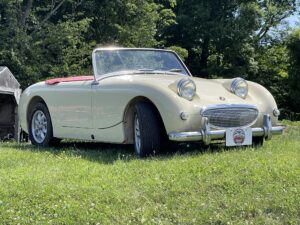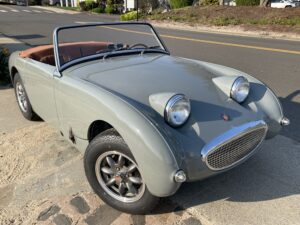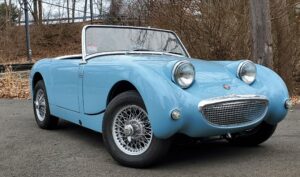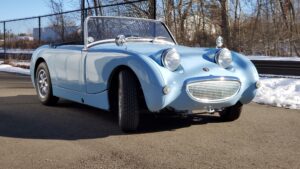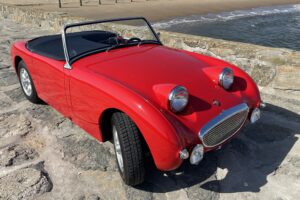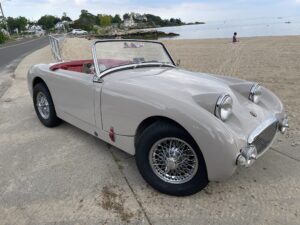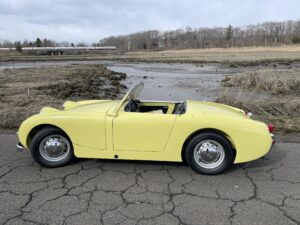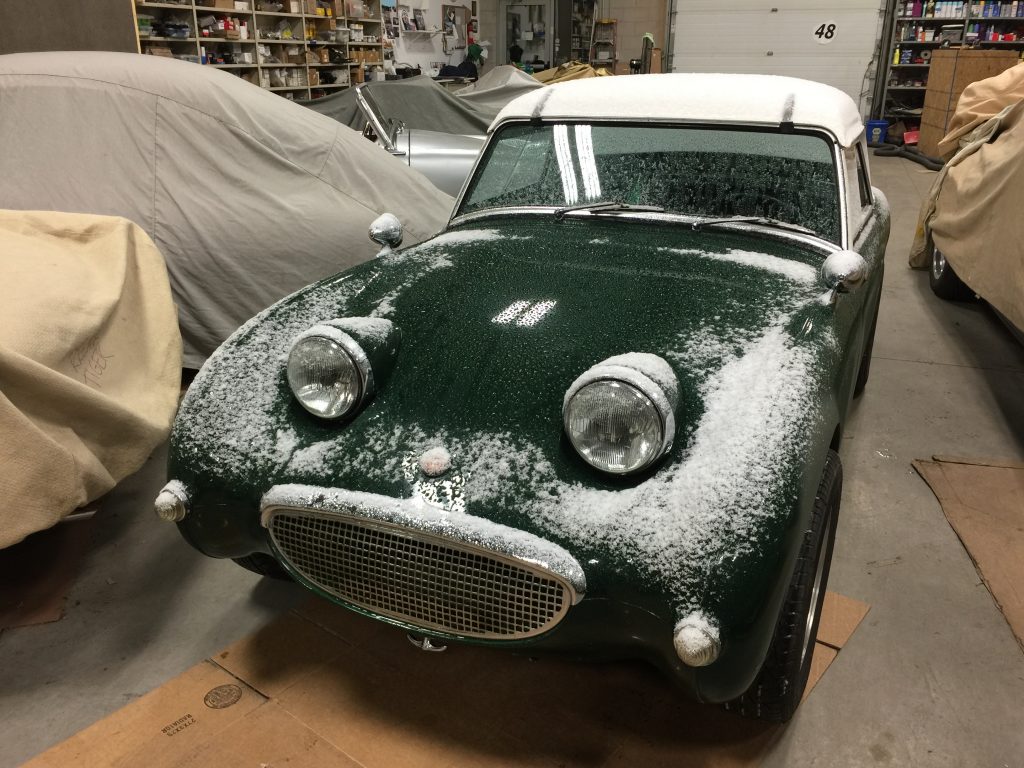
Don’t do what I did in 2015 (above)… that winter, I drove my Bugeye “Gumby” all winter long (and if you do, make sure to dry off the car before you park it). Of course, I was about to restore the car, so I didn’t care if it was exposed to the elements.
But the first rule is not to put it away. Keep it accessible if you can, so you can take advantage of the occasional warm and dry days that sometimes pop-up. A drive midwinter is the best thing to do to keep your car exercised and the best way to make sure your car is ready for action in the Spring, (as long as the roads are dry and salt free).
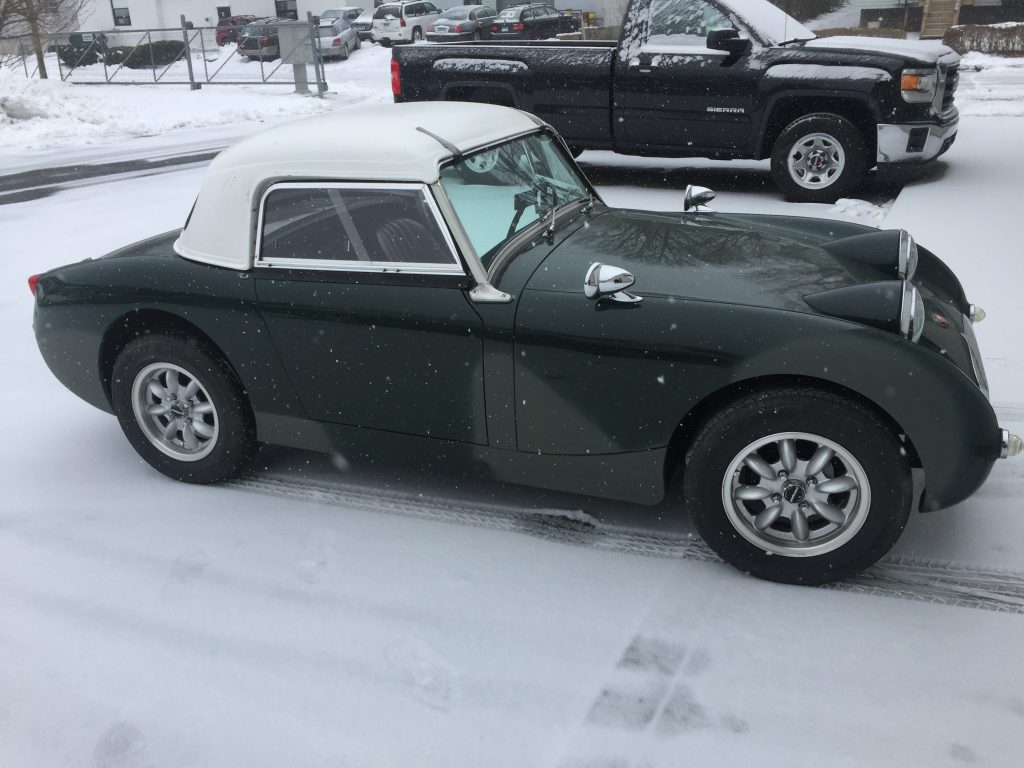
Let’s assume that you live in a particularly cold climate where road salt is on the road all winter long and you can’t use the car at all in the winter, even when the sun comes out. In this case, your number one priority is fuel management.
Put the car in storage with a full fuel tank to reduce the size of the air cavity in the tank, where moisture can condense into the fuel. Moisture is a huge issue, and your fuel will attract less moisture if there is no air in the tank (because it is full of fuel).
Ethanol in fuel makes matters worse since it attracts moisture right through your vented Sprite fuel cap. It’s smart to pour in a bottle of alcohol dry gas every spring to get rid of any moisture in the tank. This will reduce the rust that usually form in our fuel tanks and sometimes rusts them through, resulting in a leak. We sell a premium alcohol based dry gas product which you can purchase by clicking here.
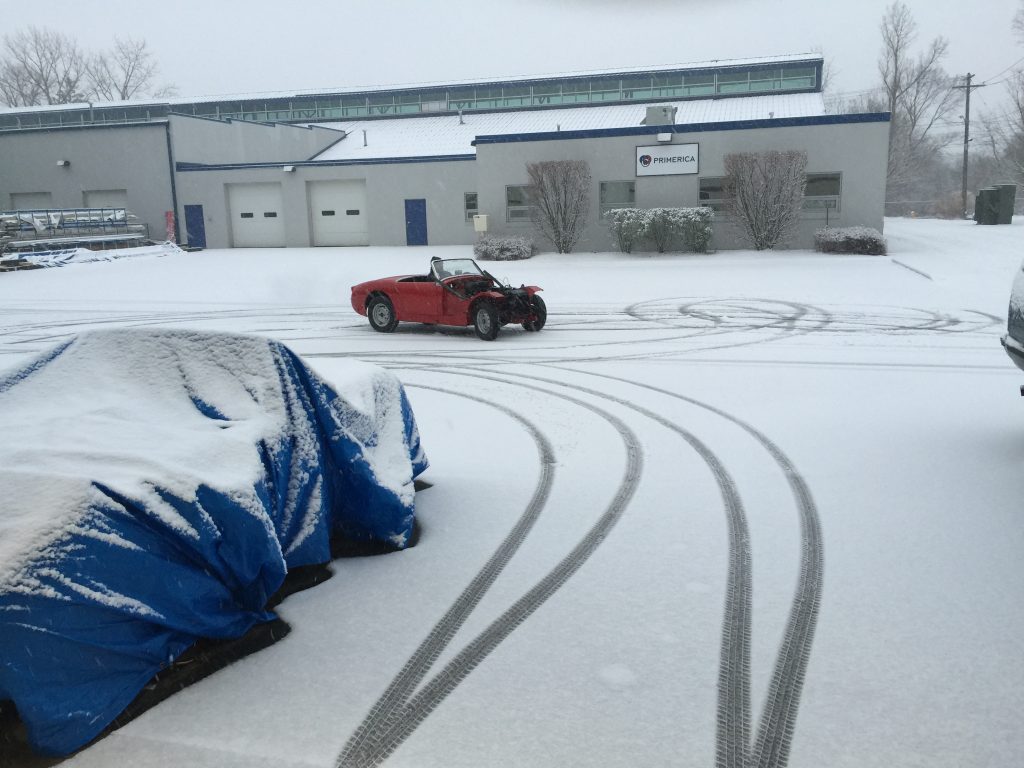
After you fill-up for storage, treat the fuel with Stabilizer (which you can find in our catalog by clicking here). This is essential, because fuel goes bad over time and messes up everything. Stabilizer will keep it fresh through the winter. Always try to burn all the fuel in your tank before you refill, if possible. We have seen quite a few cars that have water at the bottom of their tank with (lighter) fuel on top of the water. So it’s best to burn the old fuel and then refill the tank with fresh fuel. This is hard to do without running out of gas since fuel gauges are so unreliable. But if you only add 1/4 tank every time you fill up, you will never get rid of the old fuel and water that tends to delaminate and lay at the bottom of your tank.

Next is hydraulic fluid. This is also absorbing water through the vented cap, and will turn black over time due to moisture. Contaminated fluid then pits your master and slave cylinder bores and ruins the seals. I suggest you change your hydraulic fluid every two years to keep the water out. We use Castrol fluid, which you can buy by clicking here. Don’t try to top up your way to cleanliness… you have to get rid of all the old black fluid and replace it with new.
Change your oil at least once a year, no matter how many miles you drive each year (most people don’t do 3000 miles per year in their classic car, which is a smart oil change interval). Water accumulates in your oil too, and can corrode your engine bearings. An oil change will get the water out.
Make sure your car is running 50/50 antifreeze. You can check it with an inexpensive tester available at any auto parts store. A 50/50 blend will keep down corrosion in your cooling system, and also protect your engine from freezing down to about -35 degrees F.
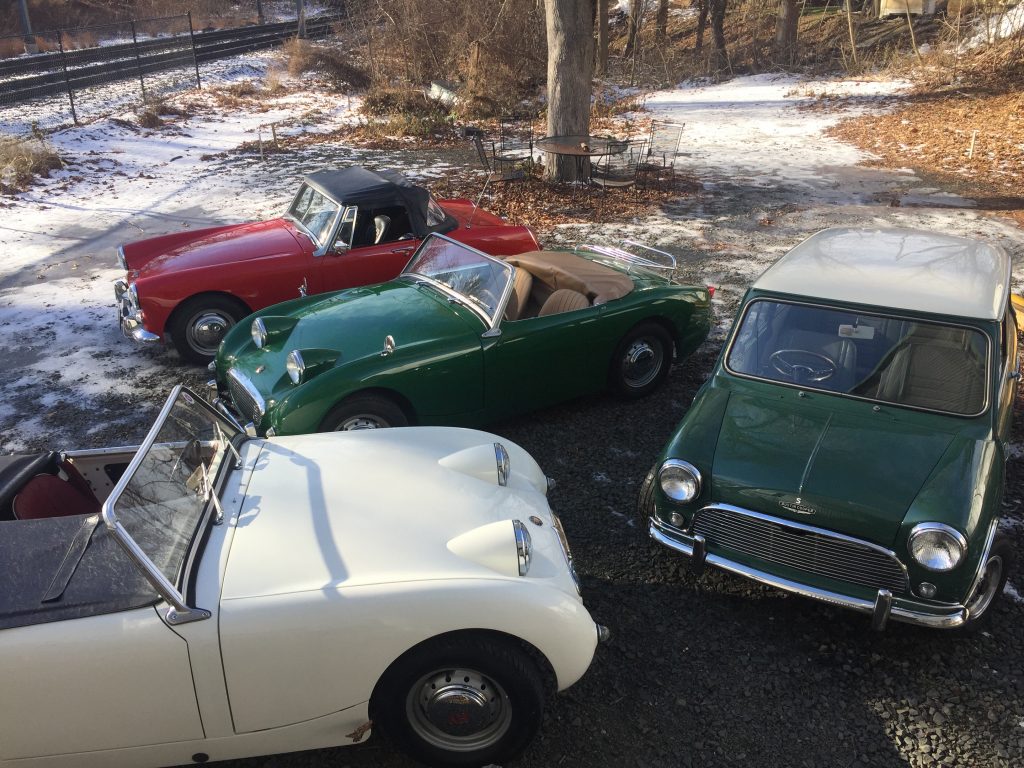
Fill the tires to 30 PSI. They’ll lose pressure every month, and as temperatures drop.
And keep your battery on a trickle charger. We recommend this model from our catalog, which you can find by clicking here. Keep the battery fully charged during storage, to protect the longevity of your battery.
And make sure there are no mice in your garage. Some people love dryer sheets as a repellent. Find a repellent that works for you, or surround your car with traps.
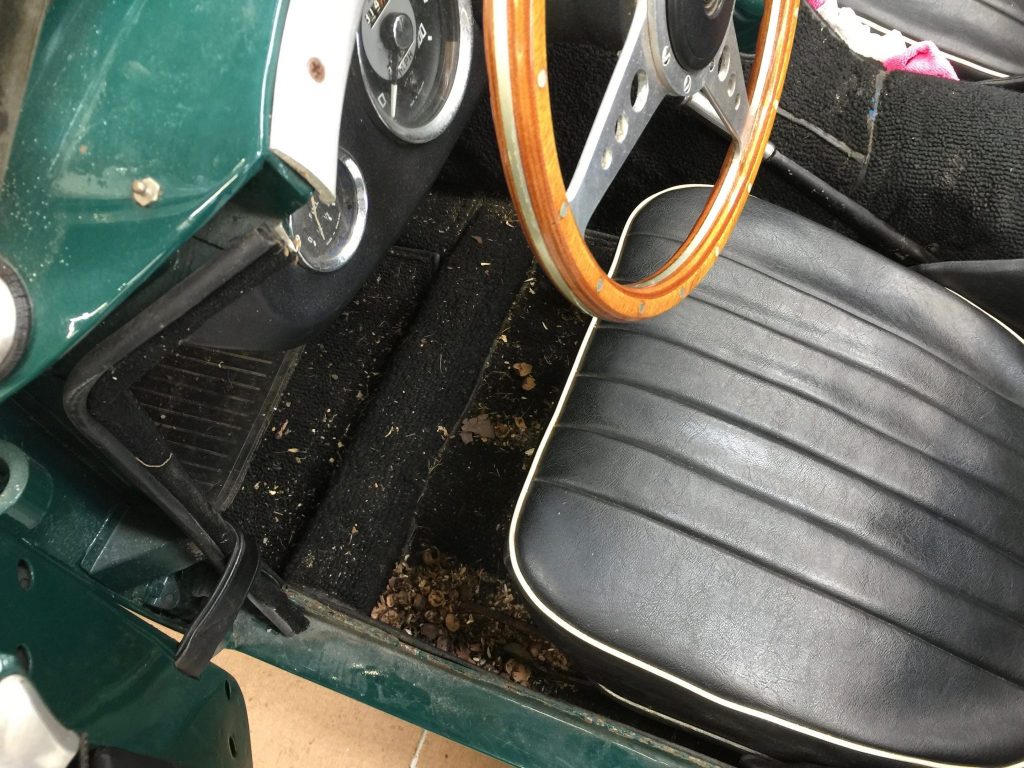
Some people love mothballs, but I can’t stand the smell, so I wouldn’t recommend them. The smell makes driving your car unpleasant in the Spring. But keep in mind that mice love to live in Sprite seats and folded tonneaus, and can do terrible damage so do everything you can to keep them out.
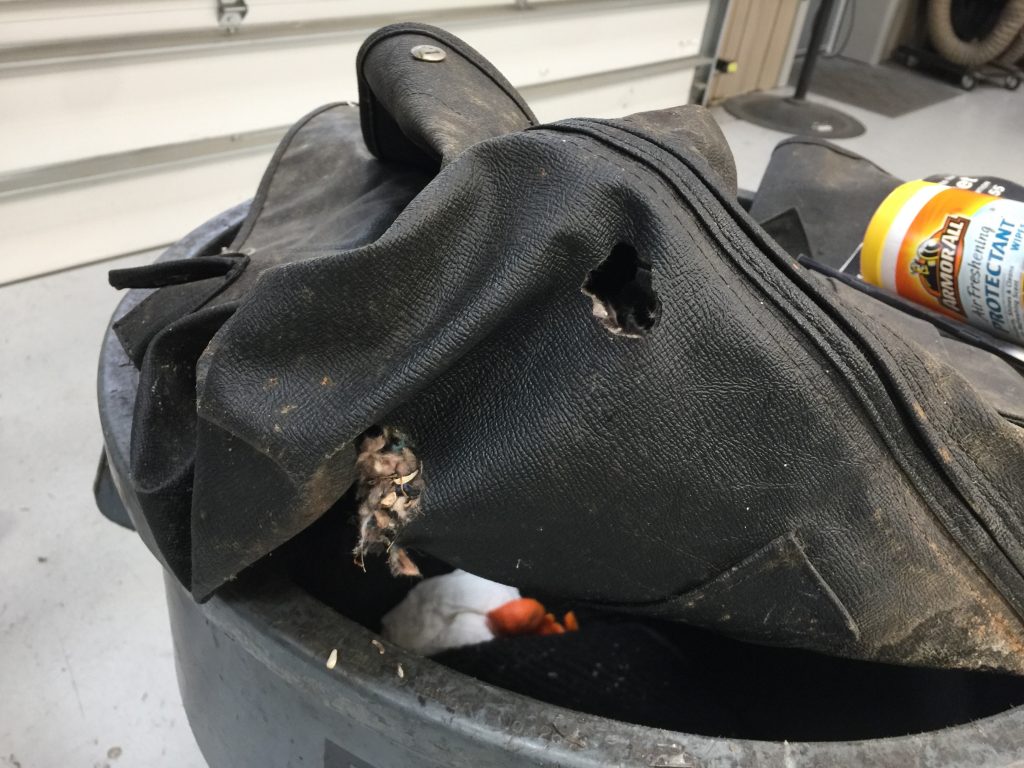
Keep your car warm if possible and certainly dry, on a hard (not dirt) floor. Don’t cover the car if you are keeping it in a wet place, as the cover will keep the water on the paint such that it can’t dry.
A damp, flooding or humid garage is almost as bad as parking outside. Run a dehumidifier if you have to, or your car will grow mildew underneath and inside the closed interior.
Take good care of your car over the winter and it will reward you with readiness in the Spring!
